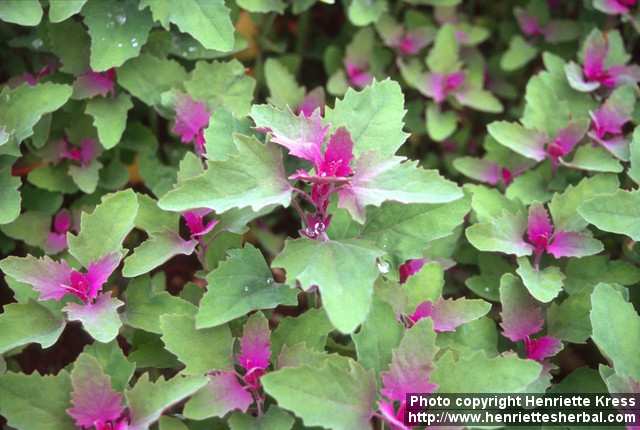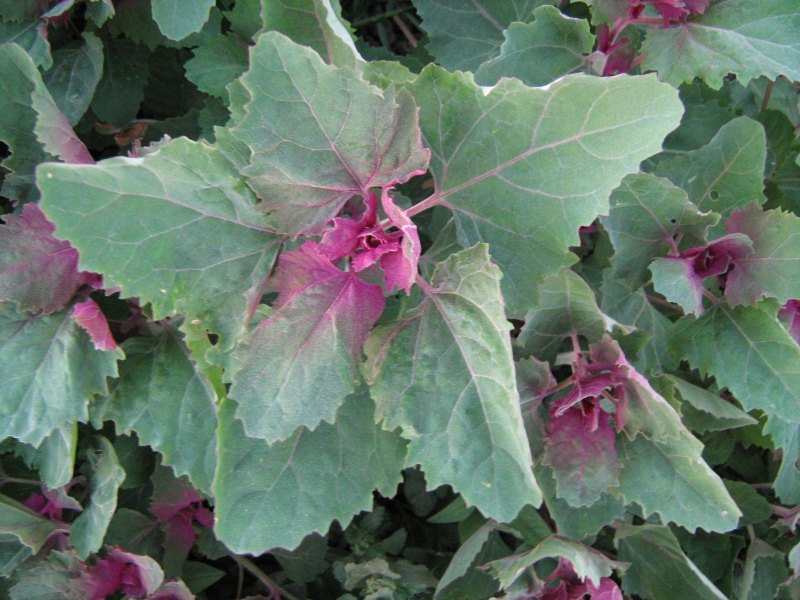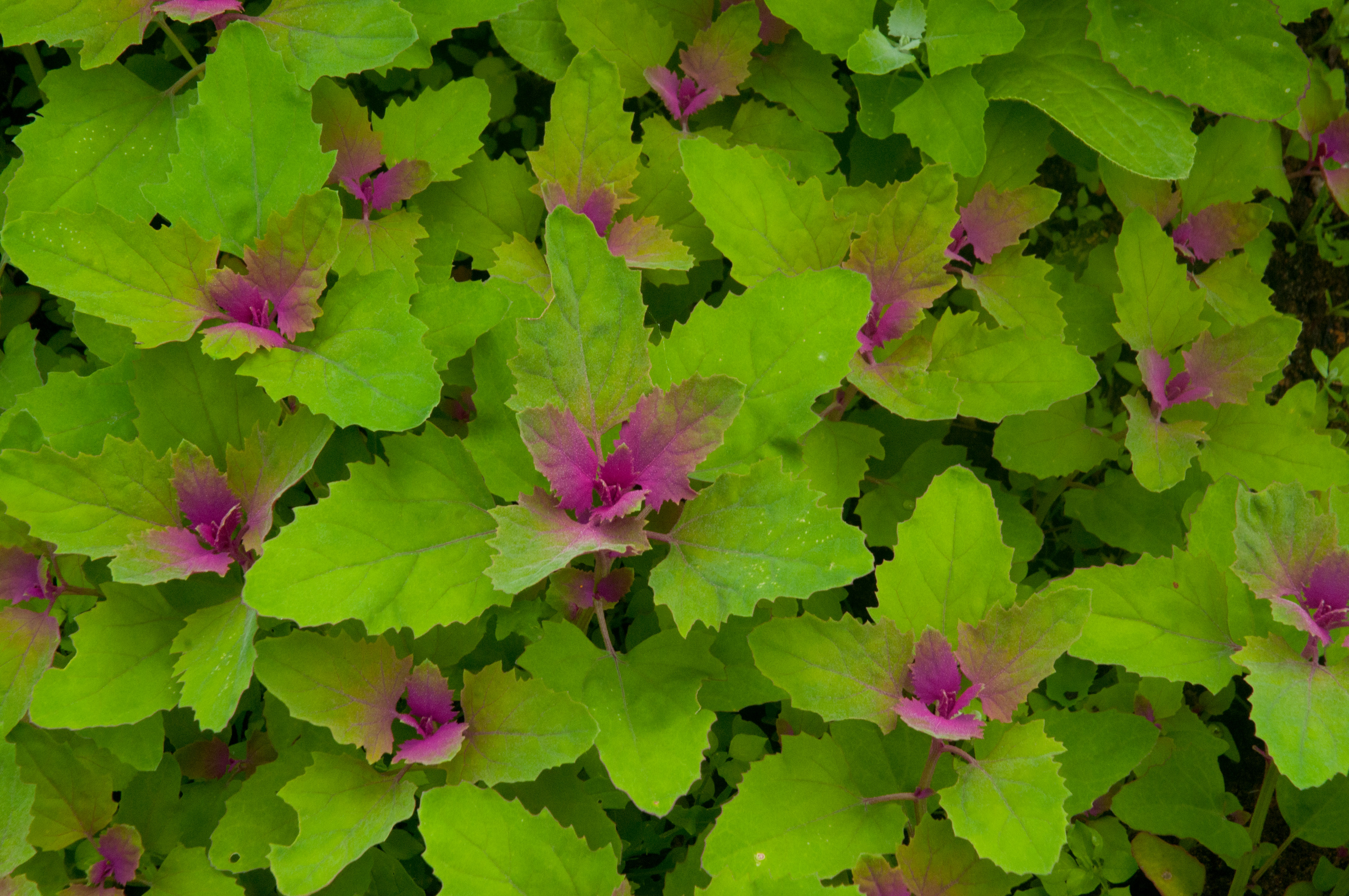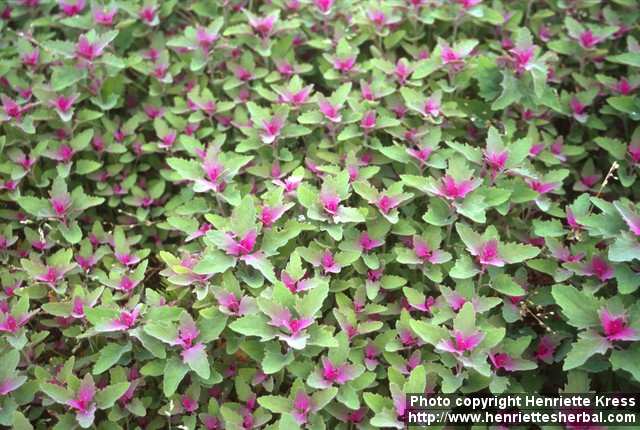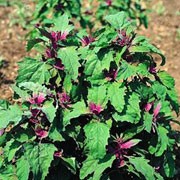Chenopodium giganteum
Tree Spinach ( Chenopodium giganteum)
Tree Spinach ( Chenopodium giganteum ), also called Riesengänsefuß, a species of the genus of geese feet is ( Chenopodium ).
Description
The tree spinach is an annual herbaceous plant, the plant height can reach up to 3 meters. The shoot axis is upright and highly branched in the upper part. The strong stem is striped reddish- green or reddish- purple and attaches to the base to 5 centimeters.
The upper side light green, lower side dark green leaves are stalked. You are almost bald or oberseits mealy. The spreading are rhombic to ovate, and measure up to 20 centimeters in length and 16 centimeters in width. The leaf base is broadly wedge -shaped and the leaf margin irregularly serrated wavy. The tip is blunt in general. The upper leaves are ovate or ovate - lanceolate and young covered with golden-yellow or reddish hair bubble, giving the leaves a floured appearance.
The tree spinach flowers from July to September. The inflorescence consists of large, terminal, floured panicles that hang to fruit ripening. The hermaphrodite flowers are a plurality in hanks or individually. The perianth consists of five green or dark -purple, egg-shaped tepals with membranous margin. There are five stamens present.
The fruit is lenticular, with membranous pericarp. The horizontal seed reaches a diameter of 1.5 mm. The black or reddish black seed coat shows net-like lines.
The chromosome number is 2n = 54
Dissemination
The original area of distribution of tree spinach is probably originally in India, but is not exactly known. Archäophytisch spread the kind in Nepal, today's People's Republic of China and throughout Southeast Asia. Neophytisch it is today to be found in all temperate areas. Also on Madagascar, the tree spinach was introduced.
System
The first description of Chenopodium giganteum was made in 1825 by David Don.
Synonyms for Chenopodium giganteum D.Don are Chenopodium album subsp. amaranthicolor HJCoste & A.Reyn. , Chenopodium album var centrorubrum Makino, Chenopodium album var purpurascens ( Jacq. ) Kuntze, Chenopodium amaranticolor ( HJCoste & A.Reyn. ) HJCoste & A.Reyn. , Chenopodium atriplicis Lf, Chenopodium bonariense Moq. (nom. invalid. ), Chenopodium centrorubrum ( Makino ) Nakai, Chenopodium elegantissimum Koidz. , Chenopodium leucospermum Schrad. , Chenopodium mairei H.Lév. , Chenopodium punctulatum Scop., Chenopodium purpurascens Jacq., Chenopodium purpurascens GADEC. and Chenopodium rubricaule Schrad. ex Moq.
Use
The leaves of the tree can be spinach ( Spinacia oleracea) used cooked or eaten in salads like spinach. However, the plants in small quantities contain saponins and larger amounts of oxalic acid, which can be detrimental to the compatibility. The seeds can be eaten cooked.
The strong stems are used as walking sticks.
Because of the striking leaf color type is also sometimes grown as an ornamental plant. Popular culture is mainly the hybrid Chenopodium giganteum ' Magenta Green', which is slightly lower and has particularly showy leaves.

